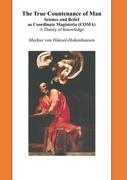Did you mean:
Contenance92 Results for : countenance
-

The True Countenance of Man
The True Countenance of Man - Science and Belief as Coordinate Magisteria (COMA) - A Theory of Knowledge: ab 100.99 €- Shop: ebook.de
- Price: 100.99 EUR excl. shipping
-
Swell Burst & Dye
John Danyel published his only book of songs (cunningly entitled Songs) in 1606. He entered Royal service in 1612, where he worked hand in hand with his brother - the poet Samuel Danyel. Many of John Danyel's lute songs were composed to texts written by his brother, although the authorship of certain poems is unclear. Upon Samuel's death, John published The Whole Works of Samuel Danyel. Danyel's most frequently performed piece, Like as the Lute Delights notes and demonstrates the careful interplay between lute and voice that is required for the intricate lute songs of this era. His three-part song cycle Griefe Keepe Within is dedicated for the funeral of the husband of "Mrs. M. E.", exact identity unknown. The text of this song speaks of the uselessness of tears, as they serve just as easily for happiness as for sadness. Tyme, Cruell Tyme is an admonition of Time itself, which seems to be conquered by a beautiful woman. Always fascinated by the techniques and devices used in composition, his three-part Can Dolefull Notes asks and attempts to answer questions about which musical approach should be executed for specific emotions. In late 1625, after attending the funeral of King James I/VI and becoming part of the "houshold of or now dread Sovereghne Lord King Charles,' John Danyel died. Aside from being the best known composer for lute and voice, John Dowland is now believed to have been involved in espionage for Queen Anne of Denmark and for Sir Robert Cecil. This post was likely achieved through his conversion to Catholicism. There is research being conducted into the possible double-entendres of some of his poetry that was sent from court to court. It is not unlikely that he wore lots of black clothing and carried a metallic briefcase full of scores. Some of Dowland's texts were his own, while some were of unknown authorship and used by multiple composers. What if I Never Speed is a song of unrequited love that warns the beloved that the singer has choices and is willing to move on. As usual, though, the smitten remains smitten at the end. I Saw My Ladye Weepe is one of Dowland's most famous lute song. It describes in great detail the countenance of a woman in deep sorrow. Dowland and various members of his family transcribed known lute solos and songs into what is now known as the Dowland Folger Manuscript, held at the Folger Shakespeare Library. Most of these pieces are anonymous and were likely used as a teaching tool for lute students. Renowned for deeply depressing pieces, Dowland (pronounces doe-lind) wrote his lute solo Semper Dowland Semper Dolens (Always Dowland Always Pained) in 1600. He died in 1626, just a few short months after the death of John Danyel. The organist Thomas Tomkins later dedicated a madrigal to Dowland and Danyel, linking the two composers for posterity. Francis Cutting was a well-respected lute player, composer and arranger about whom very little is known. Most of his compositions remain in manuscript form and were not published in his lifetime. Doctor, lawyer, poet and musician Thomas Campion had a way with words. He composed a large collection of airs and masques, almost all of which were set to his own poetry. Campion was known for his story-telling songs, which contrasted the emotive techniques used by Danyel and Dowland. However, he also occasionally published an impassioned melody. A perfect depiction of adolescent angst, See Where She Flies illustrates a young woman whose temper flares, and yet her allure is still great. When the God of Merrie Love is a strange cautionary tale of a nurse who chides the God of Love. Although it begins pleasantly enough, the nurse does not fare well through the short tale. Another piece that weaves a story is When Thou must Home to Shades of Underground, where the story-teller turns out to be hiding something from the listener until the very end. The Sypres Curtaine of the Night is an atmospheric song which paints the darkness, after which the ghosts and goblins all come out. It relates a fear of the unknown and of death, which Thomas Campion himself may have felt when he was accused of (and later acquitted of) the murder of Sir Thomas Overbury. Campion died of plague in 1620, when health-care workers and physicians had no access to vaccines, and there were not even queues to complain about in Public Health offices. A Note on Programming This programme is meant to take the audience through the rise and fall of a life. It begins with the pleasant sounds of music, song and morning. It works through pubescent drama toward the resignation of adulthood and the sometime despondency of middle age. The programme closes with the acquiescence to death or sleep. Thus, it Swells, Bursts and Dyes. A Note on Spelling The poetry being presented in this programme was written before the advent of English standardised spelling. There were manye attempts at correcting this confusion made betweene 1568 and 1634 by severall renowned orthographers. Nonn of these proposalls waz giv'n due consideration as writers and ye litterate folkes of the tyme had becom accostom'd to ye varrious spellinges of eech wird. Composers e'en spelt theyr oun names inconsistentlie from one dockument to the nexte. The Symplifyed Spelinge Bord was created in the Unit'd States in 1906, at wich pointe Andrew Carnegie and manye of his litterarie colleegues beganne to putt in playce the words we alle nou knou to bee accept'd Inglishe. Keepe reedinge ye poemes - thou gets used to it. -GMcL.- Shop: odax
- Price: 26.25 EUR excl. shipping
